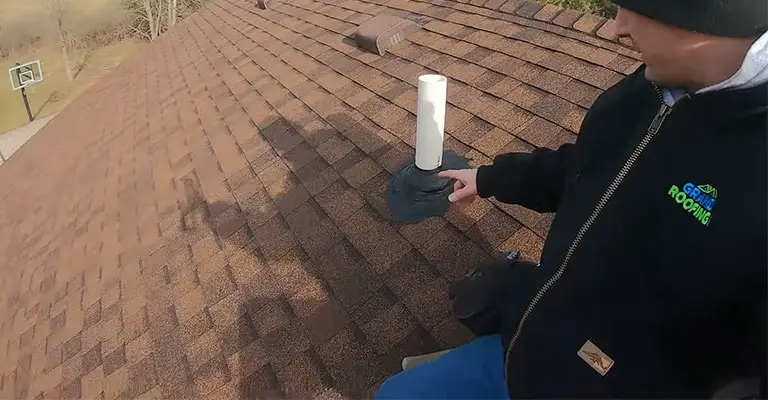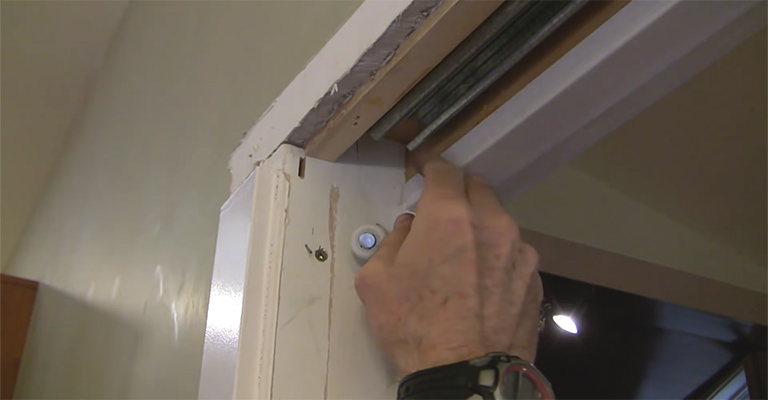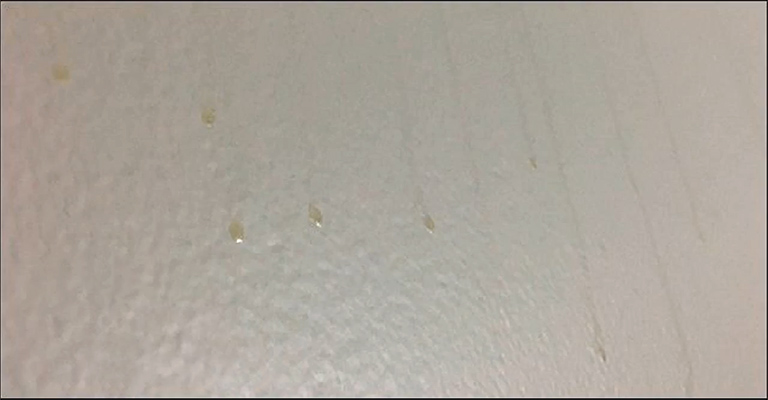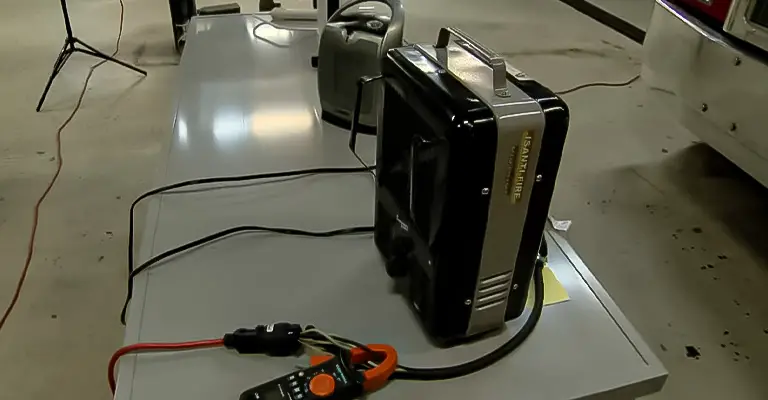How Do You Replace Grout With Caulk?
The masonry product grout is a dry powder that is packaged in a bag. The adhesive properties are activated by mixing it with water. After the grout hardens, it is almost indestructible.
As opposed to caulk, which is flexible, semiliquid, and comes in tubes, latex, silicone, or acrylic are all used in caulking. After it cures, caulk is more flexible than grout, allowing it to relax slightly if the house settles, for example.
What Does Grout Do?
The joint between tiles is filled with grout. On floors and walls, grout serves only to fill the gaps between tiles after they have been glued in place. As well as keeping the tiles from shifting, grout also keeps the edges of the tiles from chipping.
The two types of grouts are sanded grout and unsanded grout. Joints wider than 1/8 inches are filled with sanded grout, while joints less than 1/8 inches wide are filled with unsanded grout.
It is always a good idea to read the intended purposes of grout before purchasing. Grout comes in a variety of varieties with varying properties; some are more durable than others and add small amounts of additives to improve their holding power.
It is better to use grout in wet areas. Caulk is better for shower doors and walls with tiles, but grout is better for tiled shower walls and floors. The grout is primarily responsible for this because it adheres to the backer board, the concrete material used to support the tiles.
Using a backing board, tiles, and grout, a water-impermeable masonry surface is created. This prevents the growth of mold and wood damage caused by moisture.
What Does Caulk Do?
In addition to sealing joints between tiles and fixtures, caulk also seals gaps in walls. Caulks keep tiles from sticking to other surfaces, such as bathtubs, sinks, and walls.
An added finishing touch is provided by carefully applied caulk (known as beading). In addition to caulk, the grout may also be used as a sealant, though caulk is stickier and adheres to a wide range of materials.
Angled seams are well suited for caulk. The best material to use for filling joints between tiles in showers and other places is grout. The waterproof silicone caulk comes in handy when two tiled shower walls connect, or when the floor of the shower meets the wall.
Due to settling, the grout in these seams could crack more easily than the grout in other seams. It’s more flexible, so tile setters use caulk matching their tile’s color to seal these seams. Many use grout, but they switch to epoxy grout to reduce the risk of cracking.
Replacing Grout With Caulk
Grout and caulk can be used for the same purpose, which is to fill the gaps between materials. Nevertheless, deciding which product to use in certain locations can be difficult. For example, a tiled kitchen floor uses grout to fill voids between the tiles and prevent them from cracking.
The only exception to this rule would be where the tile meets the cabinets or the wall. Due to the house settling over time, the grout may crack over time due to minor movements. In addition to silicone, acrylic, and latex-based caulks, the material is flexible and can absorb movement.
The grout between the floor tile and island base is cracked and damaged in my kitchen. Therefore, I removed the grout and replaced it with caulk. Here’s how to fix this problem if you have one.
1. Identify And Remove The Damaged Grout
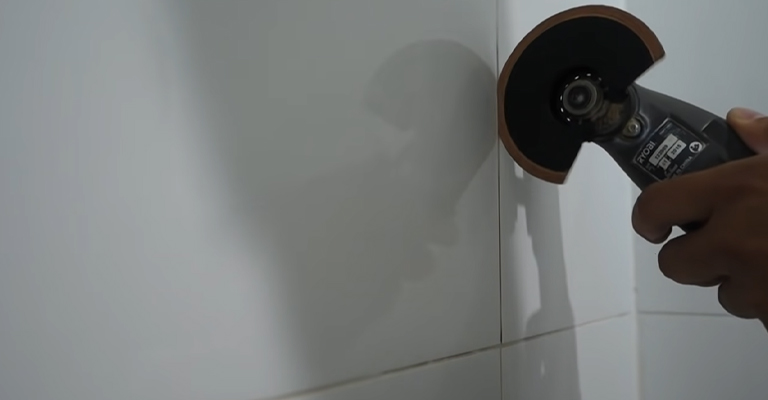
Food debris was embedded in deteriorating grout joints. I forcefully removed the grout using a thin metal rod. Using a handheld grout saw will help you remove any remaining grout from the tile and cabinet.
If you need to remove the grout, there is a grout scraper that you can use to break up some of the bigger pieces. The best thing to do is brush away any loose bits of grout, but do not remove ok grout.
2. Clean The Area
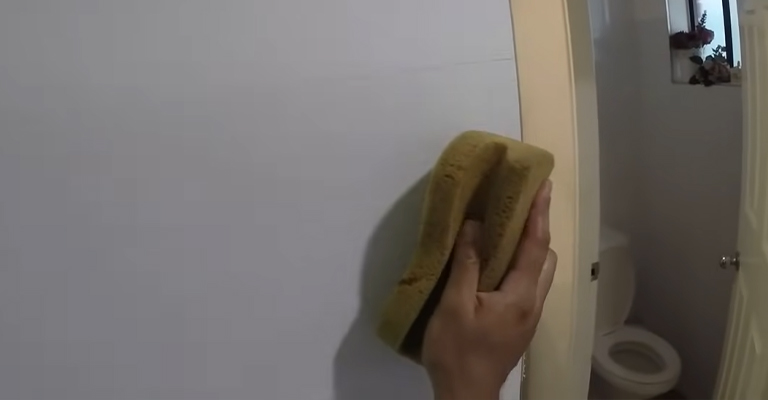
The grout was removed, but there was still debris and crumbs left behind. After I vacuumed up the crumbs, I wiped the whole area down with a household cleaner. This was the final step before caulking.
3. Fill The Caulking Gun With Caulk

There are two types of caulks: squeeze tubes and cartridges. A caulk gun and cartridge result in a continuous bead, and this is how I applied the sealant. Cut off the tip of the cartridge by slicing it at an angle after placing it in the caulking gun.
To fill up a gap, make sure you cut the cartridge hole to the same size as the gap you want to fill. Generally, the closer you cut the hole to the tip, the smaller it will be.
4. Fill In The Gaps With Caulk
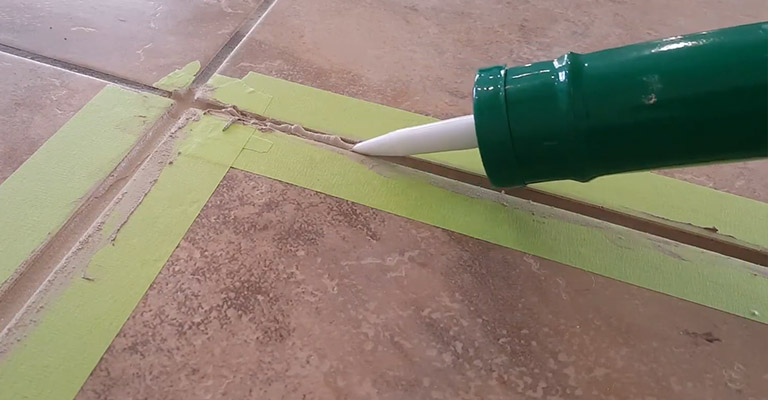
Either choose a color that is close to that of the grout or choose a clear color. Get a caulking gun to make the application easier, it will make it a lot less messy.
Squeeze the trigger on the caulk gun and drag the tip of the cartridge along the gap (don’t push it) with a 45-degree angle.
Pull back and let go of the trigger after you complete a short line. Nothing to worry about! When you move on to the next step, you will fix it if it is not perfect. Another tool they sell is a triangle wedge tool with a rubber tip that gives you a nice, finished bead.
5. Smooth The Caulking Line
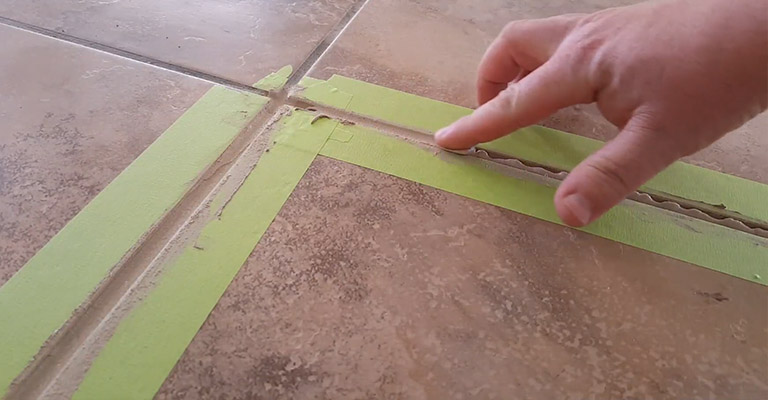
Apply caulk finishing tools or use your finger to smooth the caulk lines and push them in the crevices. If excess caulk remains, wipe it off with a damp cloth.
6. Complete The Joint
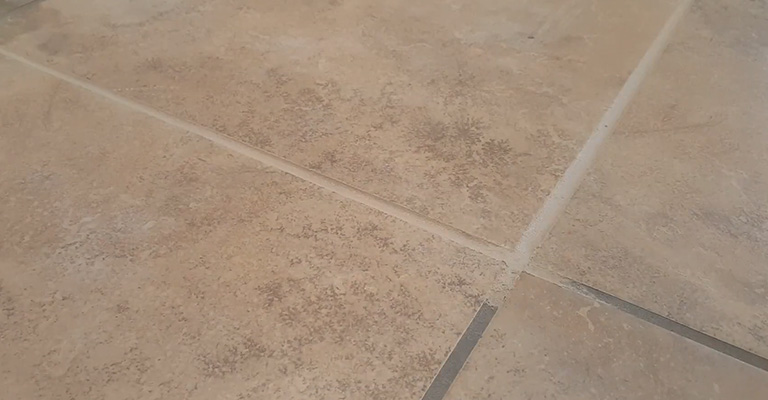
The entire joint must be filled by repeating steps 1 through 5. It is easier for me to work with one short length at a time, pausing to do a bit of smoothing and wiping up excess as I go along.
Can I replace the grout with caulk?
If you have grout that is starting to show signs of wear and tear, you can replace it with caulk. Caulk is flexible enough to adhere to two different materials such as glass and tile.
Caulk may shrink or dry out over time, which is why it shouldn’t be used in large installations or as a replacement for grout.
Caulk is a temporary fix that should be used in areas that don’t require a more permanent solution. It is important to note that caulking may not be a long-term solution for grout and should be replaced every two to three years.
Can you fill cracked grout with caulk?
Cracked grout can be fixed with caulk. This will restore the look of the grout and fix any cracks. Apply caulk to the cracks and smooth with a spoon. Wet your fingers and smooth the caulk with them. Caulk is a great way to fix cracked grout.
Final Words
If you want to avoid cracks in corners, caulk should be used, though you can certainly use it over the top of what’s already there. In my opinion, you won’t need to do much more than that to get a continuous bead.
But I can see that using a grout saw would be beneficial in ensuring that the grout is even and dropped below the level of the tile. Purchasing silicone caulk and thoroughly cleaning all joints will ensure that caulk will last for several years and then need replacing.
Before applying, make sure that everything is dry. You will be able to ensure the longevity of your work. Even if you’ve never caulked, you shouldn’t be intimidated by this task.
Be sure to follow these suggestions when choosing a caulking product. This project requires siliconized ceramic tile caulk for indoor ceramic tiles. For a seamless finish, match the caulk color to the grout.
Also Read-

